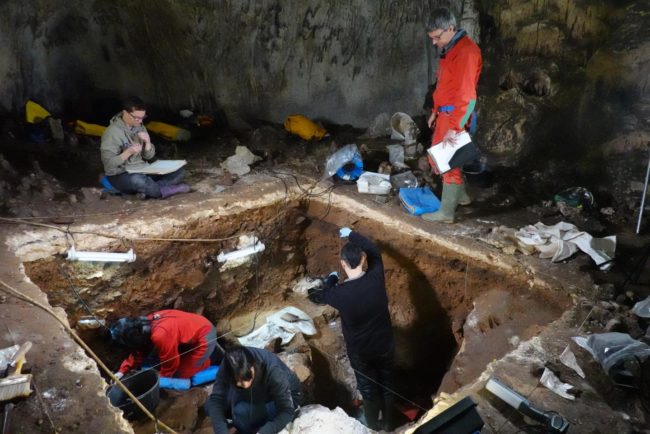Researchers working with sedimentary ancient DNA (sedaDNA) use science and technology to illuminate the past. They are locating the macrocosm in the microcosm. From just a single sediment sample, for instance, they can now retrieve and analyse a plethora of genomes.
Ancient environmental DNA (eDNA) is a great way to assess the local presence of animals, plants, fungi, and microbiota through time. Most DNA is quickly ingested by bacteria or degraded through chemical and physical processes, but sedaDNA (a subset of ancient DNA) can survive all of this, even in the absence of visible fossils. This is because genetic material can bind to sediment and protect these molecular fragments for millennia, especially when perennially frozen[1]. Anthropologists who study prehistoric life can now rely on genetics to help them recreate scenes of the past.
A sediment sample as small as 100 mg can contain tens of billions of DNA fragments from all forms of life in a local ecosystem. Because sediments (and the ancient DNA incorporated within them) are usually deposited gradually and continuously over time, we can examine them to reconstruct past ecological communities. They can also provide local dates for when a certain taxon first appeared and disappeared, independent of the completeness of the body-fossil record. This comes in handy when scientists are trying to determine when a certain group of animals went extinct.
One exciting example of how scientists have used sedaDNA was in determining the timing of extinction of an island population of mammoths. St. Paul island, off the coast of Alaska, is a small island that was once part of the Bering Land Bridge (what humans used to cross over from Siberia into the Americas around 13,000 years ago). It became famous for its late-surviving population of woolly mammoth. Using sedaDNA, researchers dated the extinction at about 5600 years ago. They found that the principal cause of extinction was a lack of freshwater, the result of sea-level rise and an increasingly arid climate. This study reinforces 21st-century concerns about the vulnerability of island populations and the consequences of future warming events[2].
With sedaDNA, we can also detect population-level changes by tracking the arrival or disappearance of alleles and lineages in a region, which was recently shown for Neanderthals from a cave in Spain.[3] Estatuas Cave in northern Spain was the scene of exuberant activity 105,000 years ago. Artefacts show its Neanderthal inhabitants made stone tools, butchered red deer, and may have made fires. They also shed their DNA onto the cave floor. Dirt from Estatuas Cave yielded the first nuclear DNA from an ancient human derived from sediments.
Although earlier technology could recover mitochondrial DNA (mtDNA) from cave floors, nuclear DNA—which divulges much more detailed information about an individual—could previously be extracted only from bones and teeth. Now, nuclear DNA can be obtained from dirt. Analysis of nuclear DNA from Estatuas Cave revealed the genetic identity and gender of ancient occupants and showed that a group of Neanderthals replaced another about 100,000 years ago.
These achievements merely hint at the potential of sedaDNA analysis when using environmental genomics alongside data derived from body fossils.
[1] https://www.nature.com/articles/s41467-021-27439-6
[2] https://www.pnas.org/content/113/33/9310
[3] https://www.science.org/doi/10.1126/science.abf1667
Edited by Liam Butler
Copy-edited by Claire Thomson

